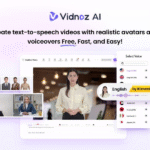In today’s streaming-first world, media companies, content creators, and production houses face a mounting challenge: how to effectively deliver video content to diverse audiences across the globe. With international viewership becoming a critical growth driver, ensuring that your content resonates across languages and cultures is no longer optional—it’s essential. Yet, localization involves far more than translating dialogue. From subtitling and voiceovers to timing adjustments, version control, and format conversions, every layer of the process must be precise, culturally appropriate, and technically compatible with the requirements of global broadcasters and streaming platforms.
This complexity is compounded when teams are working across different tools, languages, and time zones without a unified system. As a result, delays, inconsistencies, and quality issues can arise—undermining the effectiveness of even the best creative work. What’s needed is a centralized, scalable solution: one platform that allows multiple stakeholders to collaborate seamlessly, ensures accuracy across versions, and keeps the process aligned with tight deadlines and technical specs. This is where media localization software becomes a game-changer—integrating translation workflows, professional subtitling software, voiceover coordination, and quality control into a streamlined, professional-grade environment designed for global success.
What Is Media Localization Software?
Media localization software is a specialized type of digital platform designed to manage and streamline the adaptation of media content for global audiences. Unlike general translation tools that focus solely on converting text from one language to another, media localization software handles the far more intricate requirements of multimedia production. It’s not just about what the words mean—it’s about where, when, and how they appear, and how they integrate with video, audio, and visual storytelling.
Built specifically for films, television series, streaming platforms, documentaries, marketing videos, and more, media localization software supports a wide range of processes that are essential for reaching international markets. These include importing and exporting subtitle files in various formats, aligning timecodes and frame rates, integrating closed captions, managing multilingual versions, and coordinating workflows across translators, editors, project managers, and technical staff. The goal is to ensure that each localized version of a piece of content is not only linguistically accurate but also technically compatible with distribution requirements across different regions and platforms.
Key features typically include centralized project tracking, version control, review and approval systems, integration with subtitling and dubbing tools, as well as real-time collaboration capabilities. This allows multiple teams—often working across different time zones—to access the same materials, follow the same processes, and maintain consistent quality across all deliverables. By bringing together every aspect of the localization workflow into one cohesive system, media localization software enables companies to scale efficiently while reducing errors, redundancies, and delays. It’s an essential foundation for any organization looking to compete in a multilingual, multimedia-driven global market.
Why Manual Localization Doesn’t Scale
Manual localization, while feasible for small projects or one-off translations, quickly becomes unmanageable when media companies attempt to scale their content for global distribution. Coordinating multiple languages, subtitle versions, voiceovers, compliance requirements, and delivery formats without a centralized system introduces significant risk and inefficiency. Each step—whether it’s subtitle creation, timecode syncing, or quality assurance—becomes vulnerable to human error, duplication of efforts, or miscommunication between departments.
One of the most common challenges is version control. With files being passed between translators, editors, producers, and technical staff—often across different time zones and platforms—it’s easy to lose track of which subtitle version is the most recent or which region-specific adaptation has been approved. This not only causes delays but can result in incorrect or outdated content being published, damaging viewer experience and brand credibility. Similarly, inconsistencies in timing, formatting, or terminology across different languages can undermine the quality and accessibility of the final product.
Poor subtitle quality is another outcome of fragmented workflows. Without unified guidelines or real-time collaboration tools, the same standards are rarely upheld across languages. This affects readability, comprehension, and compliance with platform requirements such as character-per-second (CPS) limits or line lengths.
Media localization software addresses these issues by providing a centralized, collaborative environment that automates and governs the entire localization workflow. It offers structure through defined project stages, version tracking, and automated file management. Teams can access the latest assets, communicate within the platform, and follow a standardized process across all languages and deliverables. This ensures that every localized asset meets both linguistic and technical standards—regardless of scale, geography, or complexity. In short, media localization software turns what would be a chaotic patchwork of tools into a cohesive, scalable operation.
Seamless Subtitle Integration with Professional Standards
Subtitles are a cornerstone of any successful media localization strategy. They serve not only as translations but as cultural and communicative bridges that make content accessible, engaging, and compliant across global markets. For localization workflows to function at scale and with precision, subtitle creation and management must be fully integrated into the broader system. This is where media localization software plays a vital role—by enabling seamless collaboration between translators, subtitlers, and project managers, while supporting professional-grade standards and technical requirements.
Professional subtitling is not just about translating dialogue. It involves timing, formatting, positioning, and adherence to strict technical specifications that vary across platforms like Netflix, Amazon Prime Video, or broadcast networks. For example, subtitle files must often conform to industry-standard formats such as SRT (SubRip Subtitle), TTML (Timed Text Markup Language), or IMSC (Internet Media Subtitles and Captions). Each of these formats has specific guidelines for metadata, synchronization, and styling that must be accurately maintained to avoid rejection or playback issues.
Media localization software facilitates this by integrating professional subtitling tools directly into the workflow, ensuring that every file is created or validated with platform-specific rules in mind. It enables frame-accurate timing to ensure subtitles match perfectly with visual cues and audio, avoiding misalignment that could distract viewers or degrade the experience. Language-switching features allow subtitlers and QA teams to compare multiple language versions side-by-side, ensuring consistency and quality.
Moreover, centralized subtitle integration allows for automated quality checks, format conversions, and version updates—all essential for delivering large volumes of localized content on tight deadlines. By embedding subtitling functionality within the media localization process, teams eliminate the disconnect between translation and technical compliance, ensuring that every subtitle file is not only linguistically sound but also technically flawless.
Scaling for Streaming, Broadcast, and Beyond
Scaling content localization from a handful of short videos to entire seasons of episodic programming—or even a global catalog—requires more than a strong team of linguists. It demands infrastructure built to manage complexity, speed, and precision. Media localization software makes this kind of scalability not only possible but sustainable by streamlining every step in the localization pipeline—from subtitle integration to voiceover, metadata handling, and final delivery.
For streaming giants like Netflix, Prime Video, and regional OTT platforms, localization is a non-negotiable part of distribution. Every episode, trailer, and promotional asset must be adapted accurately, consistently, and at scale. Media localization software is uniquely positioned to support these needs, particularly for episodic content where consistency of terminology, voice talent, and style across multiple episodes and seasons is crucial. Versioning tools ensure that each localized file is linked to the right original asset, while automated workflows reduce redundant tasks and help teams meet aggressive release schedules.
Beyond subtitle and caption workflows, the software also manages other critical components like voiceover scripts and localized metadata—including episode descriptions, tags, and compliance language—all of which are key to discoverability and regional platform requirements. This ensures that audiences not only understand the content, but also find it in their language of choice through accurate search terms and platform categorization.
Finally, media localization platforms handle output formatting for a wide range of delivery specs, enabling studios and agencies to export deliverables in the exact structure required by broadcasters and streaming services. Whether it’s Dolby E audio stems, timed subtitle packages, or XML-based metadata, everything is configured to slot seamlessly into global delivery pipelines. In a media environment defined by speed, scale, and regional nuance, localization software ensures that production keeps up—without compromising on quality or compliance.
Choosing the Right Platform for Your Workflow
Choosing the right media localization software is not just about ticking boxes—it’s about ensuring that your entire workflow, from asset intake to final delivery, runs smoothly at scale. As media companies face increasing demands to localize content quickly and accurately across multiple languages and platforms, the wrong tool can become a bottleneck. That’s why it’s essential to select a platform purpose-built for media—not just general translation.
One of the first elements to consider is scalability. Whether you’re localizing a few marketing videos or managing hundreds of hours of episodic content, the platform should be able to grow with your needs. Look for software that supports batch processing, intelligent automation, and centralized version control to avoid duplicated work or miscommunication across teams.
Subtitle compatibility is also non-negotiable. The platform must handle industry-standard formats like SRT, VTT, TTML, and IMSC, and allow for seamless integration with professional subtitling tools. It should also support frame-accurate sync, language switching, and customization to meet platform-specific guidelines for broadcast and streaming services.
Cloud-based access is another crucial factor, especially for teams working remotely or across time zones. A web-based solution ensures that everyone—from translators to project managers—can access files, track progress, and collaborate in real time. Additionally, API integrations are vital for syncing with other systems such as content management, media asset management, and third-party review platforms.
User roles and permission structures should also be considered. A strong platform allows for granular control over who can view, edit, approve, or deliver content—ensuring both security and accountability.
Ultimately, the right media localization platform should feel like a natural extension of your production workflow. It should reduce friction, enhance collaboration, and empower your team to deliver localized content faster and with greater confidence. Choose a tool that understands media—not just translation.
Localization at Scale Requires the Right Technology
In today’s fast-paced global media environment, localization is no longer a simple act of translation—it’s an operational pipeline that must manage content, teams, tools, and delivery platforms in perfect sync. The complexity involved in preparing a single piece of content for multiple regions and languages—each with its own file requirements, platform standards, and cultural nuances—requires a solution far more robust than spreadsheets and email threads.
Media localization software brings this complexity under control by offering a centralized system where projects can be tracked, assets versioned, and subtitles, voiceovers, and metadata all managed in harmony. Rather than relying on disconnected tools that create redundancy, delay, and errors, professional localization platforms streamline workflows and enhance cross-functional collaboration. From file intake and task assignments to format validation and delivery scheduling, every step becomes more transparent and manageable.
For organizations that aim to grow internationally—whether they produce original content or distribute licensed media—the right software isn’t a luxury; it’s a necessity. It ensures consistent quality, speeds up time to market, and protects brand integrity across all viewing platforms.
Ultimately, scaling your localization efforts to meet the demands of streaming services, broadcasters, and global audiences starts with the right technology. Investing in purpose-built media localization software is a strategic decision that lays the groundwork for sustainable global reach and long-term success.





